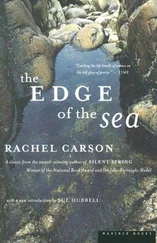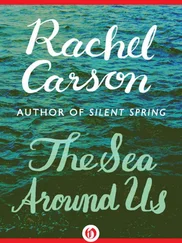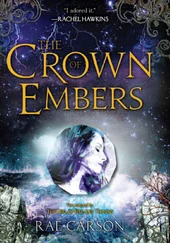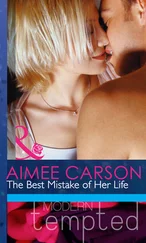We turned a corner and for the first time we saw people: two women in their forties, maybe, each followed by a string of youngsters. Each carried a pillowslip. The bins outside the shops were overflowing with scrap material and oddments, and these families, we realised, were rag-pickers. Each would stop at a bin and rummage it quickly and professionally, choosing some pieces, discarding others, stuffing them into the bulging pillowslips. There was obviously a hierarchy of stuff, whether chiffon, organdie, tulle, lace, gauze, poplin, whether plain or patterned, whether this pattern or that, and we wondered why some pieces were deemed more valuable than others, for they all appeared equal to our eyes. And where did they all end up, what patchwork did they make? It’s like something out of Victor Hugo, you whispered. We walked on, and in about two minutes we entered the red light district of Porte Saint-Denis to a swirl of competing perfumes.
Paris did indeed seem intricately classified, and had I known then what I now know about the history of artificial languages, I might have expanded your analogy of the city as language. For the earliest attempts at a universal language arose from the medieval idea that man, by reconciling himself to the City of God, in which everything had its proper place and purpose, might attain to a perfect knowledge of the universe. The whole sum of things might, it was thought, be brought by division and subdivision within an orderly scheme of classification. To any conceivable thing or idea capable of being expressed by human speech might therefore be attached a corresponding word, like a label, on a perfectly regular and logical system. Words would therefore be self-explanatory to any person who had grasped the system, and would serve as an index or key to the things they represented. Say you want to find a book in a library. You look it up in a catalogue, where you find its reference number — say, PZ0477.f.26D. If you have learned the system of classification of that library, the reference number would tell you where to find that particular book out of millions; moreover, it would indicate what kind of book it was. The initial P would at once place the book in a certain main division, and so on with the other numbers, till those at the end of the series would lead you to a particular bookcase, a particular shelf, and finally to the book itself.
Just so, a word in a philosophical language. I was not altogether surprised to learn that one of the most interesting of such languages was invented by a Frenchman, Jean François Sudre, a musician educated at the Paris Conservatory. Walking the city as a student, he had been struck by its many sounds, from the tolling of the church bells to the screech of a knife-grinder’s stone. It struck him that all these had a musical value, which could be expressed by the seven notes of the scale, do, re, mi, fa, sol, la, si. As the city broadcast itself, so everything in the city, everything in the world, everything in the known universe, could be expressed as a series of musical notes, whether played or written. So he proceeded to make up his vocabulary from the seven syllables of the scale, according to principles of philosophical classification. Initial do indicated a class of key, that of Man, moral and physical; dodo gave a sub-class, religion; dododo a third sub-division, and so on. The other major classifications were re , clothing, household, family; mi , human actions, bad qualities; fa , country, agriculture, war, sea, travel ( fafa stood for sickness and medicine); sol , arts, sciences; la , industry, commerce; and si , society, government, finance, police. By shifting the accent from one syllable to another, he formed within a single stem the verb, the noun of the thing, the noun of the person, and the adverb corresponding to a given idea.
Sudre published the principles of his language in 1817, calling it Solrésol, which meant ‘language’ in Solrésol, and he thought its resources practically unlimited, not least because such a system lends itself to all possible forms of graphic, phonetic, and optical expression. If the seven notes of the musical scale are pronounced in the ordinary way, you can speak the language like any other; but you can also sing it, or play it on an instrument; with bells and horns, you can communicate to a ship in distress; substitute the seven colours of the rainbow for the seven notes of the scale, and you have an optical language, to be spoken by means of flags, lanterns or rockets.
Enthusiasts of Sudre’s language — they included Jules Verne and Victor Hugo — thought that elaborate works of oratory might be produced by means of son et lumière, or poems in the form of banquets, for the system could as easily appeal to the sense of taste. And it did not stop there, for perfumes might as easily be employed. The coloured knots of a textile rug could be a literal text, the pattern in a dress a commentary on its own style. To a speaker of Solrésol, birdsong might contain unintended meanings. I do not know, Nina, whether Baudelaire knew Solrésol, but it seems to lie behind that poem you used to quote to me, ‘Correspondances’, in which Baudelaire speaks of the trees of the forest giving forth confused words, of perfumes that are like the skin of babies, or green meadows, or oboe music; a world in which perfumes, colours, sounds, all correspond. Thus everything in the universe is meaningful. There are messages to be read in the stars, in the stones of the road, in the coloured lichens on a stone wall, if you look long enough.
Which brings me to your postcard, and what it says: Look for a long time at what pleases you . It’s like something you might find in a fortune cookie. A bon mot in the bonbon. And I’ve looked at your postcard for a long time, because it pleases me to try to unravel its meaning. Dolls, 1690–1700, Lord and Lady Clapham in formal dress, Photo © Victoria and Albert Museum , according to the caption. I know these dolls, for I too saw them in the V & A Museum, where you must have bought this card, but then I did not look at them as messages from you. It was my last birthday, you remember, just last October, I was there, perhaps you too were there, when you bought this card and the other of Two Dutchmen and Two Courtesans , did you share the same gallery space as me, and breathe the air I breathed, did you brush against me unwittingly, unseeingly, or with full knowledge and complete consent? Would you have known me, whatever I’d become since last we met, or not? Whatever the case, the two cards must be connected. Because they both come from the same source, and they both come from you. Even when we buy postcards as souvenirs or decorative objects, we have a possible recipient in mind. And you must have been thinking of me then, you must have been thinking of us. Perhaps the Two Dutchmen and Two Courtesans , poised in their tentative minuet, could stand for the first stages of our relationship, our getting to know each other, wavering between ourselves as singletons, ourselves as couple; and Lord and Lady Clapham might be what we were towards the end, or rather — the thought has only now occurred to me — what we might have become, these two ensconced in their elaborate high-backed chairs, impassive and self-satisfied, their attitudes and dress unaltered through the centuries, had you not left me as you did. And as we become them, their dress becomes us well: I picture myself in the red coat with the over-big, redundant buttons, the nonchalantly tied silk cravat, the brocaded waistcoat, the wig of human hair; your outfit is slightly more modest, but the expression given to your face, it seems to me, is more circumspect, more calculating, that of a lady who is one step ahead of her consort, though convention demands her to be placed slightly behind. She takes the longer view of their mutual history. Is this how it ended up between us? Or is this what time might have done to us?
Читать дальше












